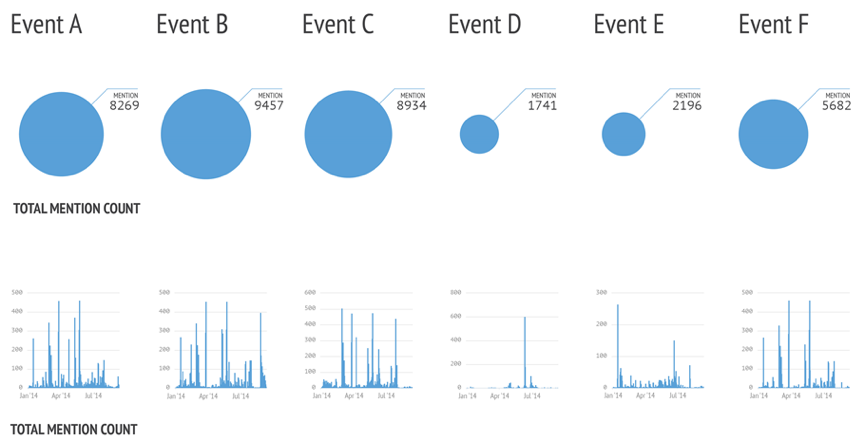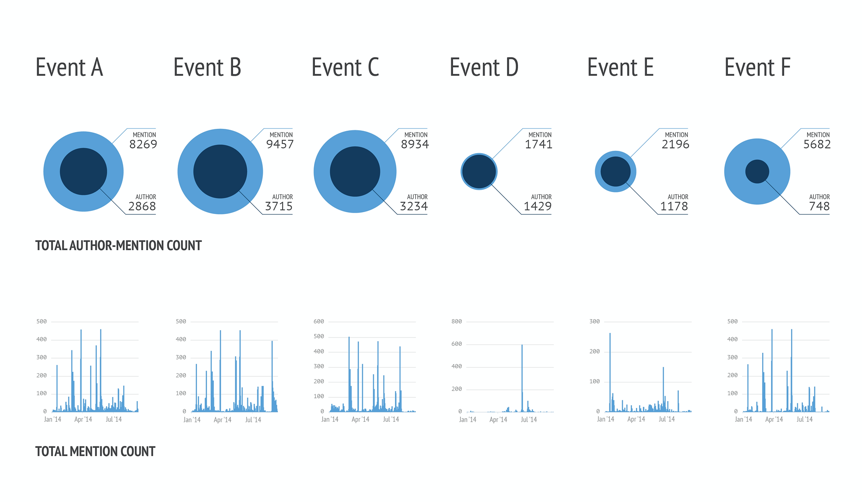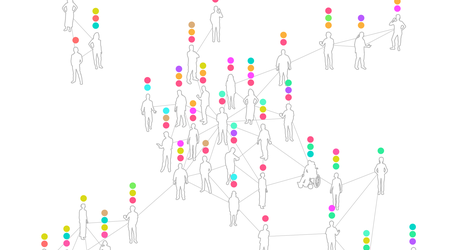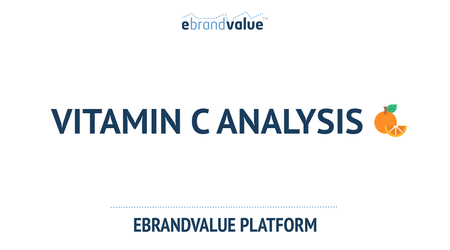What is social monitoring? What is social listening?
Social monitoring is capturing what is said about brands on social media, and the daily/weekly/monthly reporting of the distribution of contents that are created in a positive, negative or neutral tone. With this process, it is possible to answer such questions as, what percentage of brand-related online discussions/contents have been positive in tone this week and how much of a change is this from last week? Therefore, many social media monitoring tools that currently exist in the market only provide frequency and category distributions for customers. These tools capture discussions related to brands and can create many reports (sentiment, frequencies, subjects, etc.) of distributions for brands by using a manual or automated categorization.

As the importance of social monitoring has grown, its limitations have
also become more apparent. Brands have begun to realize that they cannot
answer all of their critical questions through monitoring alone. In
order to understand these limitations, we should take a careful look at
the process of branding.
Conventionally, brand management and the concept of branding are at the
heart of the entire marketing process. In classical marketing, brands
were perceived as a mixed element which told customers which
associations they should make, the kinds of benefits they could provide
within different environments and the values they represented (See first
circle in above diagram). With one-sided broadcasts controlled entirely
by the brands themselves, they were in a race against the customers in
terms of acceptance or rejection. By controlling the communication
channels brands had created a controlled environment in which to
communicate their messages, thus giving them influence over what was
thought and not thought about their products. In this sense, they were
capable of controlling communication with the customer at a macro scale.
As a result of social media and increased communication and interaction
between customers, this one-sided communication process can be
challenged by organizing alternative customer communities with their own
emphasized interests (Middle circle in the above diagram). This
alternative type of customer community, capable of blocking the “push”
communication strategy of the brand, has shown that they can seriously
affect sales and impact the performance of the brand within the sector.
In that sense, a customer’s choice to use a brand is akin to supporting a
way of thinking for other customers. Consumers can communicate with
each other about their thoughts, values and principles through their
choices to use and boycott brands.
A response to this pattern of consumer behavior would be for the brand
to restructure itself as a platform through which customers could
communicate and thus gain the partnership of those individuals (third
circle in the above diagram). That is to say, the brand’s identity
becomes equal to those conversations and it needs to position itself so
that it is always within reach for its customers. The more naturally
occurring these conversations are and the more they occur at a
customer-level, the larger the opportunity for success for the brand.
Brands have begun to look beyond the passive reporting of social media
monitoring and are looking to generate more meaningful insights through
social listening. By understanding their customers’ communication needs
and by extracting meaning from the social media contents that have been
created, brands are beginning to embrace this new strategy. The speed of
technological and economic progress in this domain emphasizes the
importance of engaging both the brand and the customers simultaneously,
and highlights the importance of understanding customer engagement for
effective brand management.
These developments have shown that it is important to draw meaning from
social listening. In short, the positive/negative categorizations and
frequency change reporting from social monitoring is no longer enough
for brands.
If used effectively, social media-based observations lead to important
facts and conclusions. For example, we know that the first question that
brand managers have is about the positioning of their brand in the
market. If we consider the contents of a campaign, the difficulties that
arise in this process may be a result of gaps in communication and
issues with the perception of the product in the sector. The existence
of these perceptions and customers’ statements regarding the brand can
all be used as evidence in this regard. Social media can provide a way
to view the perceptions of the customers in a much clearer manner in
that one can consider the actual “verbatim” statements that are
organically generated by those interacting with the brand. Even the
absence of interactions by the customers is a meaningful observation
that can be used to assess a brand’s performance, in that it might
indicate that the brand-related social media contents are not of
interest to the target audiences.
Social media enables brands to identify key competitors and their place
in the sector relative to each other. For example, the number of
contents produced per brand could be used as a simple comparative tool
between them. One particularly valuable element of social media data is
its real-time nature, and these social media contents can easily be
collected from social media tools and monitoring services.
What are the limitations of social monitoring/listening? What sets eBrandValue apart?
It is impossible to correlate sales successes to only brand-based “likes” or increases in frequency that are measured within a vacuum. Having an understanding of the activities and performance of a brand’s competitors and the entire sector is critical to assessing the brand’s relative performance. Let us explain this with a case study:Let us compare six brands, each with their own campaign, during the period of January – September, as visualized in the diagram below. Each “event” in the diagram corresponds to a campaign, while each letter from A to F represents the brand that was running the campaign. The larger circles represent the number of contents created for each of the campaigns (mostly composed of positive-tone contents), while the frequency distributions beneath show the peaks of activity during the period. This diagram reveals to us that brand F’s campaign (which generated 5682 contents) was successful in comparison to the campaigns of brands D and E.

The analyses thus far are constructed within the scope of existing social media monitoring and listening tools. However, the understanding of brand performance goes beyond the simple breakdown presented here as these types of analyses cannot be used to generate meaningful foresight about real-world sales. It is in this regard that eBrandValue stands out. eBrandValue, which is a big-data infrastructure and analytics platform, utilizes an individual ID profiling method when collecting and analyzing social media data, keeping track of each author who is active in the sector and their current and historical brand preferences.
If we revisit the campaign analysis we carried out in the diagram above,
we should also consider the identities of the authors creating the
social media contents within the study. Below, we have updated the
previous figures to also include the relevant author statistics. One
point that stands out in the diagram below is that the lowest number of
authors belongs to the campaign of brand F. Two interpretations of this
figure may be that either there is a passionate and committed author
base that has repeatedly engaged with the campaign, or it is possible
that the data has been impacted by bot accounts or agency-led content
generation. By analyzing the data in the diagram below, we gain the
insight that the campaign of brand F has reached the lowest number of
authors among all competing campaigns, and has thus been the least
effective in its strategy within the sector.

eBrandValue allows one to truly understand the nature of online audiences, to determine the extent and authenticity of their engagement and to identify the cause-and-effect relationships that drive their migrations between brands.
Sosyal Monitoring | Sosyal Listening | eBrandValue | |
Main Features | Frequency and classification (e.g.,) reporting | Topic, word cloud, social media based interaction / reactive CRM | Individual Profiling, reporting on each individual's brand affinity and changes, proactive approach based on individual's profile in CRM |
Value Proposition and Created Impact | Classification of emotions related to brand in social media and notification of positive / negative changes | Finding out which issues the brand is associated with, responding to customer complaints | Configuring and monitoring metrics that determine sales, finding and tracking brand, competitors and individuals with the brand affinity of the sector, identifying strategies and proactive customer acquisition strategies |
To learn more about eBrandValue Platform, and how such metrics influence brand value, contact us using the form below.








